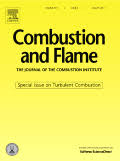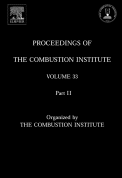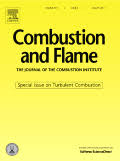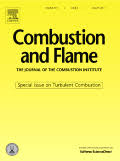
Methane is probably the most frequently studied hydrocarbon fuel. Both its oxidation mechanism and its pyrolysis to higher-mass products have received considerable attention. In order to have a glance into the combustion chemistry of methane, a detailed kinetic model was developed to reproduce the fuel decomposition and the formation of benzene and PAHs in laminar methane flames. The model was validated against the experimental data from previous works on premixed flames, counter flow diffusion flames, and finally the coflow diffusion flames experimentally investigated in this work. Reaction pathway analysis highlights the combustion kinetics of methane in various flame conditions, including the differences in fuel consumption paths, and the formation of low molecular weight species, benzene and PAHs. C2–C4 species are important intermediates in the combustion of methane, which significantly control the formation of larger molecules and the emission of pollutants. Resonantly stabilized free radicals, such as propargyl, benzyl and indenyl radicals are major PAH precursors, but other aromatic radicals like phenyl and naphthyl radicals also play a significant role. Their self-recombination reactions or the addition reactions on small hydrocarbon intermediates (e.g., C2 species) are effective aromatic grown pathways in laminar methane flames.
Keywords
Methane; Laminar flames; SVUV-PIMS; Kinetic modeling; Benzene and PAHs formation
How to cite
Jin, H., Frassoldati, A., Wang, Y., Zhang, X., Zeng, M., Li, Y., Qi, F., Cuoci, A., Faravelli, T.
Kinetic modeling study of benzene and PAH formation in laminar methane flames
Combustion and Flame, 162 (5), pp. 1692-1711 (2015)









